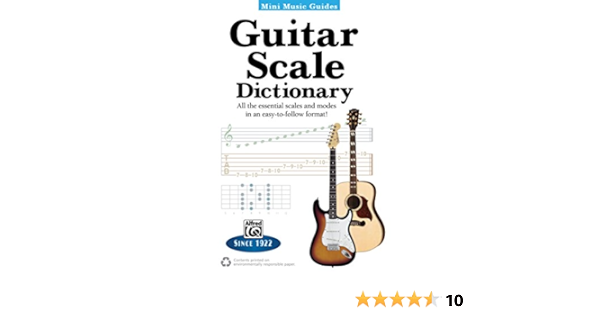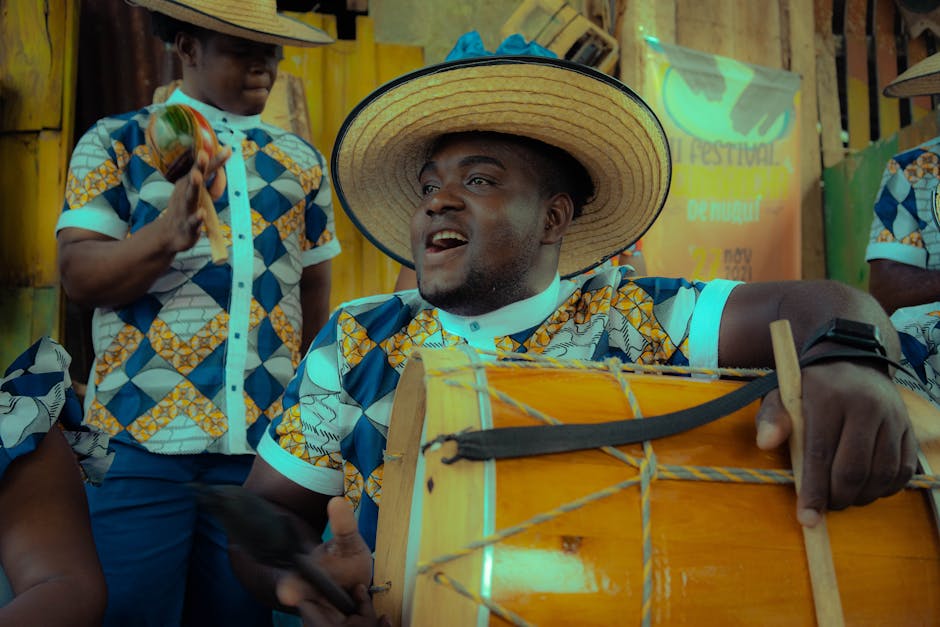Welcome to the wild and wacky world of guitar and music theory, where the notes are sharp, the chords are major, and the rhythm is offbeat (literally). It’s a place where scales rule and time signatures reign supreme, and if you don’t know your pentatonics from your power chords, you might as well be speaking a different language. But fear not, brave soul, for we are here to guide you through this treacherous terrain with a healthy dose of humor and a sprinkle of musical magic. So grab your guitar, tune up those strings, and prepare to embark on a musical journey like no other. Let’s dive into the deep end of the fretboard, shall we Music Theory for Guitarists”>
Music Theory for Guitarists”>
Contents
- 1 Essential Elements of Music Theory for Guitarists
- 2 The Significance of Understanding Scales and Modes
- 3 Mastering Chord Progressions and Their Role in Songwriting
- 4 Unlocking the Secrets of Chord Progressions
- 5 Exploring the Relationship Between Rhythm and Tempo
- 6 Approaches to Improvisation within Different Music Genres
- 7 Incorporating Advanced Techniques for Expressive Playing
- 8 Navigating the Landscape of Musical Styles on Guitar
- 9 FAQs
- 10 Rock On!
Essential Elements of Music Theory for Guitarists
Some key concepts that every guitarist should know when it comes to music theory include:
- Scales Important? Top Reasons Revealed”>Chords: Understanding how chords are built and the different types of chords (major, minor, diminished, etc.) can greatly enhance your playing.
- Scales: Knowing your scales inside and out will help you improvise and solo with ease. Practice those pentatonic scales until your fingers bleed!
- Rhythm: Don’t be a slave to the metronome, but do pay attention to rhythm patterns and time signatures. You don’t want to be the guitarist who can’t keep time.
Remember, music theory is not just about memorizing formulas and rules. It’s about understanding the language of music and using that knowledge to express yourself creatively on the guitar. So don’t be afraid to experiment and break the rules once you’ve mastered them!

The Significance of Understanding Scales and Modes
Have you ever wondered why understanding scales and modes is so important in music theory? Well, let me tell you, it’s not just because it makes you look like a total guitar virtuoso (even though that’s a pretty cool bonus). No, my friends, knowing your scales and modes is like having a secret cheat code to unlock the mysteries of music.
Think of scales as the ingredients in a recipe – each one adding its own unique flavor to the musical dish you’re cooking up. And modes? They’re like different seasoning blends you can sprinkle on top to give your music a little extra kick. Whether you’re jamming on your guitar, tickling the ivories on a piano, or serenading your cat with a kazoo, understanding scales and modes will take your musical creations to the next level.
Not convinced yet? Well, let me put it this way – knowing your scales and modes is like having a magic wand that can transform your musical ideas into full-blown masterpieces. With scales and modes at your fingertips, you’ll be able to improvise, compose, and jam with confidence, knowing that you’re always in harmony (pun totally intended).
So, next time you’re feeling stuck in a musical rut, remember the power of scales and modes. Embrace them, learn them, love them – and watch as your musical abilities soar to new heights. Trust me, you’ll thank me later when you’re headlining at Coachella.
Mastering Chord Progressions and Their Role in Songwriting
Unlocking the Secrets of Chord Progressions
So, you want to be a master songwriter, huh? Well, buckle up because we’re about to dive deep into the world of chord progressions. These magical combinations of chords are like the spices in your favorite dish – they can make or break a song. But fear not, dear reader, for with a little bit of knowledge and a whole lot of practice, you can become a chord progression wizard in no time.
First things first, let’s talk about the basic building blocks of chord progressions. You’ve got your major chords, your minor chords, and everything in between. Each chord has its own unique flavor, so it’s important to experiment and see which ones work best together. And remember, there are no wrong answers in music – unless you accidentally play a G# instead of a G. Trust me, it’s not pretty.
Now, let’s discuss the role of chord progressions in songwriting. Think of them as the backbone of your song, providing structure and support for your lyrics and melodies. A well-crafted chord progression can evoke emotion, create tension, and ultimately take your song to the next level. So don’t be afraid to get a little adventurous with your chord choices – after all, who needs another song in the key of C?
So there you have it, folks. Mastering chord progressions is no easy feat, but with a little bit of practice and a whole lot of passion, you can become a songwriting powerhouse. Who knows, maybe one day you’ll be the next Beethoven of chord progressions. Or at the very least, you’ll be able to impress your friends at the next open mic night. Either way, keep strumming those chords and let your creativity run wild. Rock on!

Exploring the Relationship Between Rhythm and Tempo
Do you ever find yourself uncontrollably tapping your foot to the beat of a song, only to realize that your foot is tapping at a completely different tempo than the actual rhythm of the song? Don’t worry, you’re not alone! The relationship between rhythm and tempo can be a tricky thing to navigate, but fear not, we’re here to break it down for you.
First off, let’s talk about rhythm. Rhythm is the pattern of beats in a piece of music – it’s the “pulse” that drives the song forward. Think of it as the foundation upon which a song is built. Now, tempo, on the other hand, is the speed at which those beats are played. It’s what determines whether a song is fast and lively or slow and melancholic. So, essentially, rhythm is the what, and tempo is the how fast.
Now, here’s where things get interesting. The relationship between rhythm and tempo is like a dance – they need to be in perfect harmony for a song to truly groove. If the tempo is too fast, it can throw off the rhythm completely, like trying to salsa to a techno beat. Similarly, if the tempo is too slow, the rhythm can feel sluggish and lethargic, like trying to waltz in quicksand.
So, the next time you catch yourself struggling to keep up with the beat of a song, take a moment to appreciate the delicate balance between rhythm and tempo. They may be two sides of the same musical coin, but when they come together just right, they create magic on the dance floor.

Approaches to Improvisation within Different Music Genres
When it comes to improvisation, different music genres have their own unique approaches that set them apart. These approaches can range from structured and methodical to wild and spontaneous, depending on the genre.
In jazz, improvisation is all about freedom and expression. Musicians are encouraged to take risks and push the boundaries of traditional music theory. They often rely on their intuition and instincts to guide them through solos, creating a dynamic and unpredictable sound.
In contrast, classical music takes a more structured approach to improvisation. Musicians are expected to adhere to strict guidelines and follow predetermined patterns. This can make for a more controlled and precise performance, but it also limits the room for experimentation and creativity.
Rock musicians often fall somewhere in between, blending elements of both jazz and classical improvisation. They may start with a basic framework and then veer off into uncharted territory, taking audiences on a thrilling ride filled with unexpected twists and turns.
Incorporating Advanced Techniques for Expressive Playing
Ready to take your playing to the next level? Incorporating advanced techniques can help you express yourself like never before on your instrument. Here are some tips to help you wow your audience with your expressive playing:
- Experiment with different articulations and dynamics to add depth to your performance. Try using techniques like staccato, legato, and accents to bring your music to life.
- Don’t be afraid to take risks and push the boundaries of your comfort zone. Step outside of your usual playing style and try new things to keep your audience on their toes.
- Practice incorporating emotion into your playing. Think about the story you want to tell with your music and let that guide your performance. Music is a language, so make sure you’re speaking fluently.
Remember, the key to expressive playing is to stay true to yourself and let your personality shine through in your music. Don’t be afraid to get a little crazy and have some fun with your playing. After all, music is meant to be enjoyed, so don’t take yourself too seriously.
So you’ve picked up the guitar and you’re ready to rock out, but where do you even begin when it comes to all the different musical styles out there? Fear not, dear guitarist, for I am here to guide you through the treacherous waters of musical genres.
First up, let’s talk about blues. Ah, the sweet sounds of the blues – it’s all about bending those strings and pouring your heart out into every note. If you want to channel your inner BB King, then grab your guitar and get ready to feel those soulful vibes.
Next on the list is rock ‘n’ roll. Think power chords, catchy riffs, and a whole lot of attitude. Whether you’re jamming out to some classic AC/DC or shredding like a madman a la Eddie Van Halen, rock ‘n’ roll is sure to get your heart pumping and your fingers flying.
And let’s not forget about country music – yeehaw! You’ll need a twangy Telecaster and a whole lot of cowboy boots to tackle this genre. From chicken pickin’ to ballads about broken hearts, country music on the guitar is a whole new world just waiting to be explored.
FAQs
Do I really need to learn music theory to play guitar?
Absolutely not! You can definitely learn to play guitar without diving deep into music theory. But, understanding the basics of music theory can take your playing to the next level and open up a whole new world of creative possibilities.
What are some key music theory concepts that every guitarist should know?
Some key concepts to grasp include understanding how scales work, chord progressions, and how to construct chords. These basics will give you a solid foundation to build upon as you continue to develop your skills.
How can music theory help me become a better guitarist?
Knowing music theory helps you understand the “why” behind the music you’re playing. It can help you identify patterns, create interesting chord progressions, and even improvise with more confidence. Plus, it’s kind of like having a secret superpower that sets you apart from other guitarists.
Where should I start if I want to learn more about music theory for guitar?
There are plenty of resources out there to help you learn music theory for guitar. Consider taking online courses, working with a private instructor, or diving into books and websites dedicated to music theory specifically for guitar players.
Is it ever too late to start learning music theory as a guitarist?
It’s never too late to start learning music theory! Whether you’re a beginner or have been playing for years, understanding music theory can only enhance your playing and creativity. So go ahead, dive in and unlock your full potential as a guitarist!
Rock On!
And there you have it, budding guitar gods and goddesses! Armed with a little bit of music theory knowledge and a whole lot of determination, you’re well on your way to shredding like a pro. Remember, practice makes perfect, so keep strumming those strings and never be afraid to dive into the wacky and wonderful world of music theory. Who knows, maybe one day you’ll be the one teaching others how to navigate the fretboard like a true rockstar. Keep on rocking, and never stop chasing those musical dreams!



